|
- - -
- -
Proud Mary
- - - -
-
|
The MARY
ELIZABETH was once referred to
as the “Queen Mother of Memphis
Towboats” for her service
in the Memphis Harbor during the
middle of the 20th century.
Here’s how the story unfolds:
 The
ship who became the inspiration
for the "Proud Mary" was built
in 1905 for the Lower Hudson
Steamboat Company of New York.
Originally named the Sarah A.
Jenks and later, the
OSSINING, she was used to
transport convicted prisoners
from New York City jails, up the
Hudson River to the infamous
Sing-Sing State Prison in
Ossining, New York – thus
explaining the true origin of
the expression, “up
the river”! The
ship who became the inspiration
for the "Proud Mary" was built
in 1905 for the Lower Hudson
Steamboat Company of New York.
Originally named the Sarah A.
Jenks and later, the
OSSINING, she was used to
transport convicted prisoners
from New York City jails, up the
Hudson River to the infamous
Sing-Sing State Prison in
Ossining, New York – thus
explaining the true origin of
the expression, “up
the river”!
She was moved south in 1911,
after being sold to the St.
Tammany Steamship Company of
Covington, Louisiana. The
OSSINING spent the next four
years being operated as a Ferry
Boat over the 630 square mile
Lake Ponchartrain.
Then in 1915 she was sold to
Lyon Bros. of Greenville,
Mississippi and used to run U.S.
Mail from Greenville, upriver to
Luna Landing, Arkansas. During
this time, she was also
converted from steam power to
diesel power, which gave the
OSSINING the distinction of
being the first diesel power
Ferry Boat on the Mississippi
River.
After a dozen years, she was
sold in 1928 to
Warner & Tamble Inc. of
Memphis, Tennessee. At this time
she was refitted and remodeled
into a Tow Boat, and
rechristened to it's more
familiar name, the MARY
ELIZABETH, in honor of a family
member of the new Memphis
owner.
During her decades of service in
Memphis, the MARY ELIZABETH was
responsible for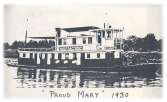 numerous duties. When the
Harrahan Bridge burned in
1928, blocking all vehicle
traffic for months until the
roadway could be replaced, it
was the Mary Elizabeth that
ferried all commerce across the
Mississippi River to Arkansas.
She also transported over 3,000
head of cattle to river islands
during the Dust Bowl era drought
of 1934; performed salvage and
rescue work during the big flood
on the Wolf River in 1935; and
worked throughout the area in
rescue and levee work during the
great flood of 1937. In 1939,
she installed the first
radio-telephone communication
lines along the Wolf River and
the Memphis Harbor. At this
time, she also became the first
Tow Boat on the Mississippi
River to be equipped with a
ship-to-shore radio.
numerous duties. When the
Harrahan Bridge burned in
1928, blocking all vehicle
traffic for months until the
roadway could be replaced, it
was the Mary Elizabeth that
ferried all commerce across the
Mississippi River to Arkansas.
She also transported over 3,000
head of cattle to river islands
during the Dust Bowl era drought
of 1934; performed salvage and
rescue work during the big flood
on the Wolf River in 1935; and
worked throughout the area in
rescue and levee work during the
great flood of 1937. In 1939,
she installed the first
radio-telephone communication
lines along the Wolf River and
the Memphis Harbor. At this
time, she also became the first
Tow Boat on the Mississippi
River to be equipped with a
ship-to-shore radio.
In 1973, the MARY ELIZABETH was
sold to Murphy Marine Service
Inc. of Memphis. Murphy Marine
ran her for a total of five
years and then pulled her out of
service.
1979 was to be the hardest year
for the MARY ELIZABETH. Sold to
a scrap dealer, George Perkins
of Memphis, the MARY ELIZABETH
was destined to be stripped and
gutted. She had the first and
second deck mid-ship house (The  main
superstructure located at the
center of the ship.) removed and
her engine pulled out. She was
then stripped of all equipment,
towed away and beached off the
Lossahatchie River just above
Memphis – only to rust from the
merciless beating by the weather
over the following seven years. main
superstructure located at the
center of the ship.) removed and
her engine pulled out. She was
then stripped of all equipment,
towed away and beached off the
Lossahatchie River just above
Memphis – only to rust from the
merciless beating by the weather
over the following seven years.
Hope of resurrection came in
1986 when the MARY ELIZABETH was
sold to Proud Mary Restoration
Inc. The hope grew as the first
signs of restoration were seen
in January, 1987. However, it
was not to be. In 1988, during
the all-time low of the river
gage in Memphis (-10.7 in the
second week of July), the MARY
ELIZABETH began breaking up on
the bank of the river and was
hauled away for scrap........
once and for all.
During the 1960s, at the height
of the Rock ‘n’ Roll era in
Memphis, a deck hand on the MARY
ELIZABETH wrote and composed a
song he entitled, “Proud
Mary”. The song describes his
feelings and experiences, his
life and times aboard his ship,
the MARY ELIZABETH. The song was
published and recorded by
John Fogerty of Creedance
Clearwater Revival, and was also
performed by other artists such
as George Jones and Johnny
Paycheck, Elvis Presley, Bruce
Springsteen and pop diva, Tina
Tuner. Tina Turner’s
upbeat rendition was more in the
early 1980s style of music and
entitled “Rollin’ On The River”.
The tune has become one of the
most popular and enduring songs
of our age and has been placed
#155 on Rolling Stone's 2004
list of The 500 Greatest Songs
of All Time.
|
Many people that
listen to the lyrics of the
song, come away with the
impression that the PROUD MARY
was steamboat pushed by
sternwheel paddles – those “big
wheels keep on turning . . .”
Well I'm sorry, but you'd be
wrong. In the riverboat
vocabulary for tow boats, the
word “wheels” often refers to
the propellers under the boat
that are turned by the engines.
Another term is “screws” due to
the propellers usually looking
like oversized screws and while
rotating to propel the vessel,
they resemble a screw being
turned. So in reality, the “big
wheels that keep on turning” are
under the tow boat, under water
and out of sight, not the big
paddlewheels seen behind a
steamboat! |
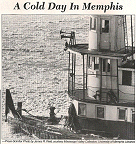
Click To Read More |
In 1993 my old friend, the late
Capt. Jake Meanley (1948-2000)
told me that in the 1970s when
he was piloting ships for
the
MEMPHIS QUEEN LINE excursion
company, he quite often used the
MARY ELIZABETH through a lease
agreement from Murphy Marine.
She was used to push the MEMPHIS
SHOWBOAT (barge) on countless
moonlight river cruises. We can
only guess at how many times
that the bands were asked to
play Proud Mary.
In the 1980s, while I was
General Manager of
Mud Island, a company by the
name of Mid-South Concerts had a
lease agreement to produce
concerts in the 5,000-seat
outdoor amphitheatre on the
island each Summer. In August of
1986,
John Fogerty
decided to tour the country
again. This time he performed as
John Fogerty, a solo artist
without the band members of
Creedance Clearwater Revival.
Previously, CCR and John had
experienced a hard break-up with
John even being sued and ordered
to not sing the CCR songs, as he
sounded too much like himself
(!?). That was quite bitter for
him and the impasse lasted quite
a few years.
The Centerfield Tour originated
in the Summer of 1986 with the
kick-off concert at the Mud
Island Amphitheatre in Memphis
on August 27. To start a tour, a
band normally plays at least one
last “full dress rehearsal”, and
this one occurred on the night
before where I was blessed to be
one of less than twenty
fortunate sons in the audience
that evening. Upon the
completion of the dress
rehearsal, I gave an exclusive
guided tour for the group
through the
Mississippi River Museum as
a courtesy (some times the GM
gets the tough jobs, too!).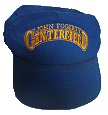
While visiting with John, he
told me that “Proud Mary” indeed
was one of his favorite songs,
and one of the reasons why he
was determined to return to
concert tours again was that so
many people told him that the
tune was now more popularly
known as the upbeat 1980s
version of “Rollin’ On The
River” by Tina Turner, rather
than as raw, gutsy sound of
“Proud Mary” by
John Fogerty of the 1960s.
Now, that was also some kind of
motivation for John.
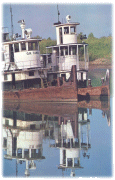 To this day, I love the title
song from “Centerfield” (“Put me
in, Coach, I’m ready to play . .
.”). And, I even have a very
cherished gift commemorating the
concert, a Centerfield baseball
cap autographed by
John Fogerty.
To this day, I love the title
song from “Centerfield” (“Put me
in, Coach, I’m ready to play . .
.”). And, I even have a very
cherished gift commemorating the
concert, a Centerfield baseball
cap autographed by
John Fogerty.
Today, the only remembrance of
the PROUD MARY in Memphis is a
beautiful color portrait in the
main dining room of
The Butcher Shop restaurant
at 101 South Front Street in
Downtown Memphis on Historic
Cotton Row. The setting of the
portrait is a calm day on the
water of the Wolf River Harbor
with the MARY ELIZABETH and the
G.H. TAMBLE tied off
side-to-side with a still
reflection to the tow vessels in
the water – an absolutely
gorgeous painting. And probably
99.99% of the patrons who sit in
this wonderful restaurant do not
know the “rest of the story” of
the history of those two junky
looking harbor tow boats
reflecting on that brown water
with all those scrap trees and
mud in the background!
“Cleaned a lot of plates in
Memphis . . .”
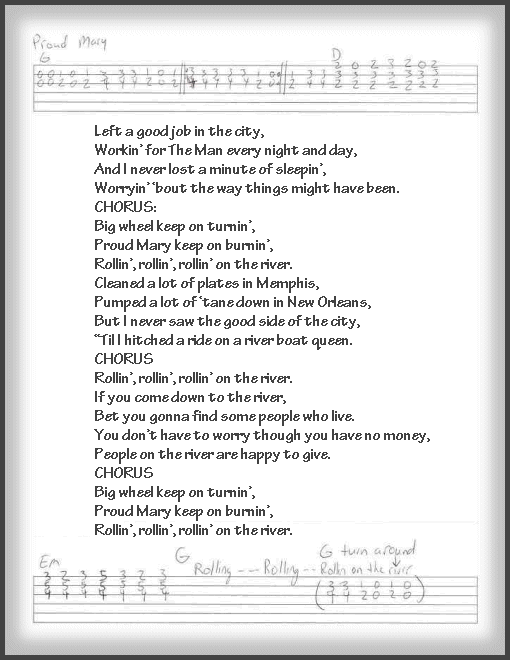
Next “Detour”
Coming Soon
|